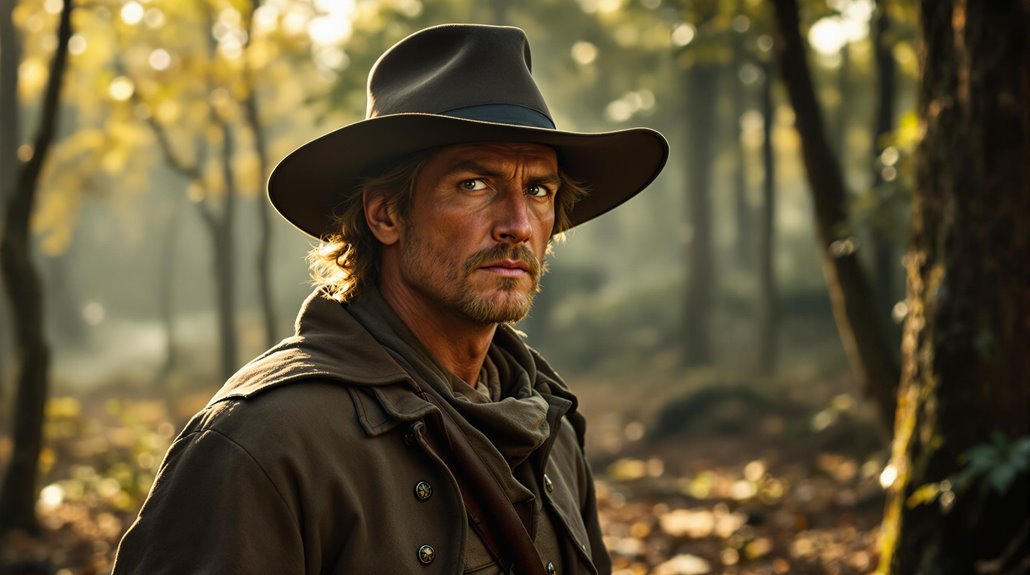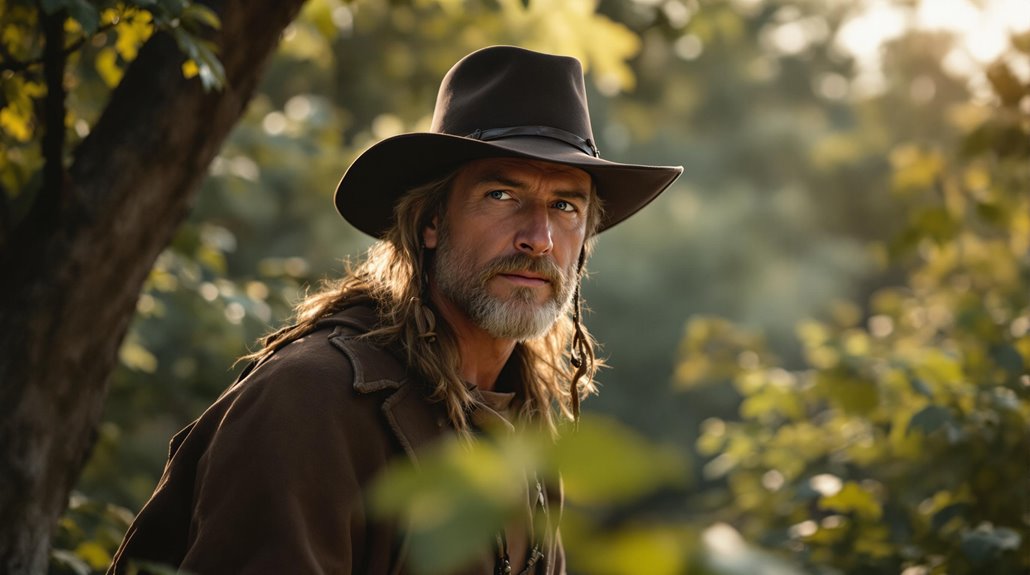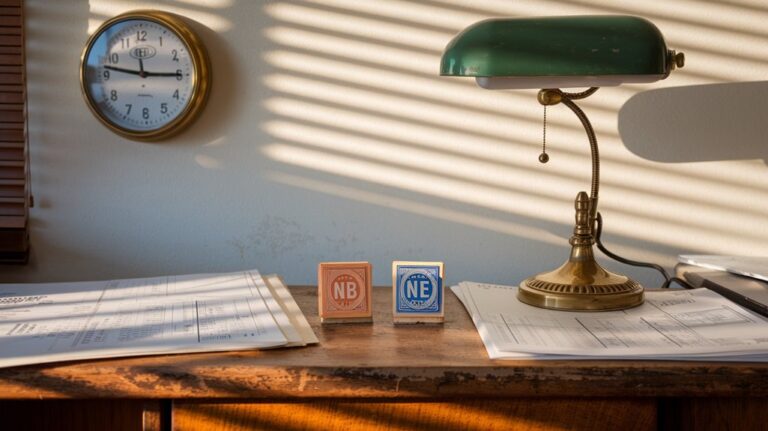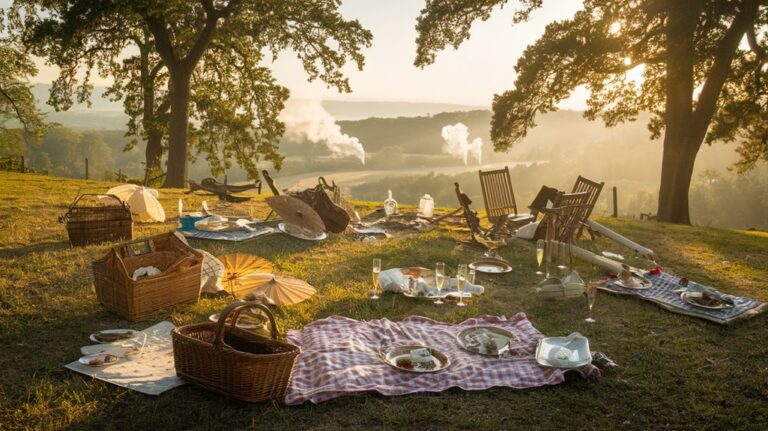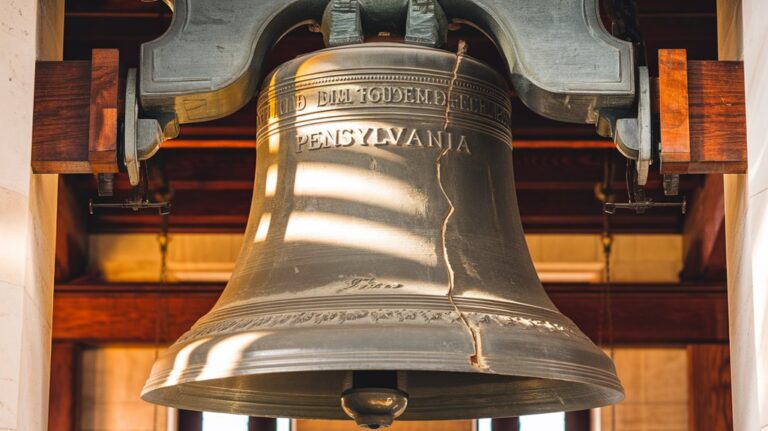Daniel Boone Typically Wore Felt Hats Not Coonskin Caps
Just as Paul Revere's midnight ride has been romanticized, you've likely pictured Daniel Boone sporting a coonskin cap as he blazed trails through the American frontier. You'll be surprised to learn that this iconic image isn't historically accurate. The legendary frontiersman actually preferred wide-brimmed felt hats, a choice that reflected both his Pennsylvania roots and practical needs. This small detail reveals how Hollywood and pop culture have shaped your understanding of American frontier life.
The Historical Hat Choice of Daniel Boone
While popular culture often depicts Daniel Boone wearing a coonskin cap, historical records show he actually preferred a wide-brimmed felt or beaver hat in the Quaker style. This choice reflected Boone's heritage as a Pennsylvania settler and his practical approach to frontier life. According to Nathan Boone's testimony, his father actually despised coonskin caps.
Today's modern fur hats like the quilted lined Daniel Boone style continue this tradition of practical comfort. You'll find that his preferred headwear demonstrated superior hat craftsmanship, combining durability with functionality. The wide brim proved essential for long hunting expeditions, protecting him from harsh sun and rain while providing clear visibility when aiming his rifle.
His hat choice aligned perfectly with other long-hunters of the era, who also favored these practical designs. Unlike the stereotypical coonskin cap that later became associated with him, Boone's actual hat choice represented the authentic dress of 18th-century frontiersmen and his Quaker-influenced background.
Debunking the Coonskin Cap Myth
Despite its enduring association with frontier heroes, the coonskin cap myth gained widespread popularity through Disney's 1954 Davy Crockett television series. Actor Fess Parker's portrayal sparked a massive fad, with stores selling thousands of caps daily across multiple countries. During the height of the craze, retailers were selling up to 5,000 caps per day.
You might be surprised to learn that the coonskin cap origins actually trace back to Noah Ludlow's theatrical performances in the 1820s, not authentic frontier fashion.
Historical records show that Daniel Boone and other frontiersmen preferred practical felt or beaver hats instead. Nathan Boone's 1851 interview explicitly denied his father ever wore a coonskin cap, helping to dispel these frontier fashion misconceptions. In fact, according to his son Nathan, Daniel Boone despised raccoon fur hats.
Today, museums and historical societies work diligently to correct this persistent myth, ensuring that educational programs accurately represent the headwear choices of America's early pioneers.
Practical Reasons Behind Frontier Headwear
Frontier life demanded practical solutions for everyday challenges, and headwear played a key role beyond simple fashion. The right hat could mean the difference between outdoor survival success and failure in harsh frontier conditions.
You'll find that frontier headwear functionality extended far beyond basic protection. While a wide-brimmed felt hat would shield you from sun and rain, it could also serve multiple survival purposes. You'd be able to use it to carry water, fan flames for fire-starting, or signal for help. Understanding the proper face shape was crucial for frontiersmen selecting hats that wouldn't impede their vision or movement. The Mexican vaquero influence significantly shaped the development of frontier hat designs.
During hunting, your hat wouldn't interfere with rifle sights or create unwanted noise that might startle game. The hat's adaptability proved essential in varying weather conditions. You could adjust the brim for wind protection, while breathable materials kept you comfortable during strenuous activities.
The Rise of Coonskin Caps in Popular Culture
A television phenomenon in 1954 transformed the coonskin cap from practical frontier wear into a nationwide cultural sensation. When Disney's Davy Crockett series aired starring Fess Parker, you couldn't escape the coonskin cap craze that swept across America and even reached the United Kingdom. The historical Davy Crockett wore his coonskin cap for politics, using it to enhance his visibility as a frontiersman during public appearances. The Alamo Gift Museum alone sold 18,000 caps in 2009, demonstrating the enduring appeal of this frontier symbol.
The cultural significance of this fad was staggering, as evidenced by:
- Sales reaching 5,000 caps daily at the trend's peak
- Profits soaring to $300 million ($2.6 billion in 2014 dollars)
- Raccoon fur prices jumping from 25 cents to $8 per pound
You'll find the coonskin cap's influence extended far beyond its 1950s heyday, appearing in shows like The Addams Family and The Simpsons.
Even today, you can spot these iconic caps at the Alamo gift shop, where they remain popular souvenirs.
How Media Shaped the False Narrative
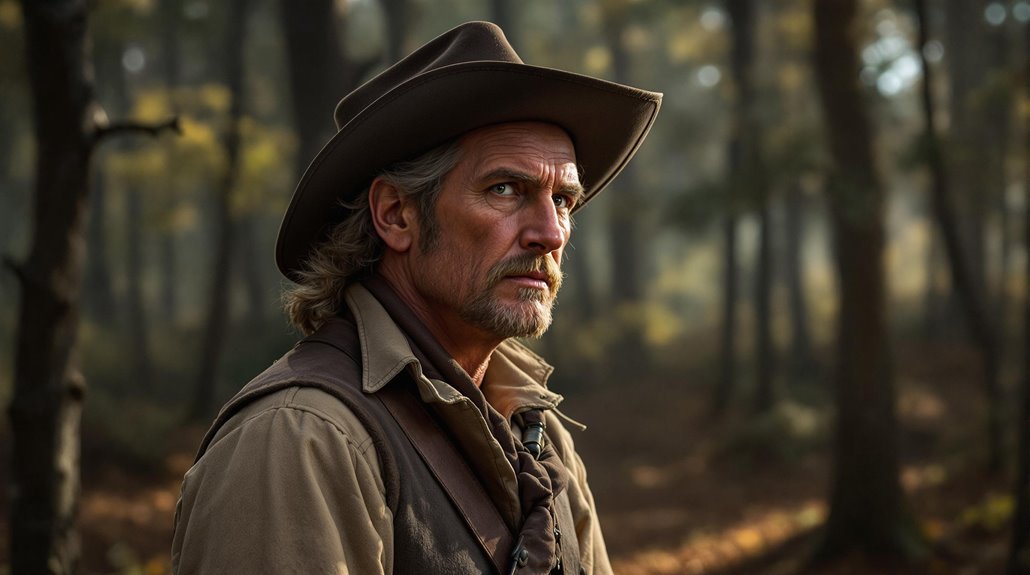
While Daniel Boone rarely wore a coonskin cap, popular media transformed his image through decades of misrepresentation. You can trace this distortion back to the 1854 book "Daniel Boone and the Hunters of Kentucky," which first depicted him wearing a fur cap.
The media influence grew stronger when NBC's "Daniel Boone" series aired from 1964 to 1970, starring Fess Parker, who'd previously played Davy Crockett. This television portrayal cemented Boone's association with the coonskin cap in public consciousness. Historical records show he actually preferred wide-brimmed felt hats for practicality.
The confusion between these two cultural icons led to widespread merchandising, with coonskin caps becoming symbols of American frontier spirit.
Even today, you'll find books, toys, and mascots perpetuating this historical inaccuracy, demonstrating how entertainment media can reshape historical figures in the public imagination.
Authentic Frontier Fashion and Daniel Boone's Real Attire
Historical records paint a different picture of Daniel Boone's appearance than what you might expect. The legendary frontiersman favored wide-brimmed felt or beaver hats, similar to those worn by Pennsylvania Quakers, rather than the coonskin caps often depicted in popular media.
His choice of frontier clothing reflected both practicality and historical accuracy of the era. He regularly carried a hunting knife and accessories on his leather belt for survival in the wilderness. Clothing choices during this period were heavily dictated by function and purpose, much like those of other frontier settlers.
When venturing into the wilderness, Boone typically wore:
- A loose-fitting hunting shirt or frock, the quintessential American frontier garment
- Buckskin leggings and moccasin boots for mobility through rough terrain
- A practical wide-brimmed hat that allowed better aim with rifles and protection from the elements
Like other frontier settlers, his clothing was made from homespun materials, including wool, linen, and linsey-woolsey, all dyed using natural ingredients from the wilderness.

